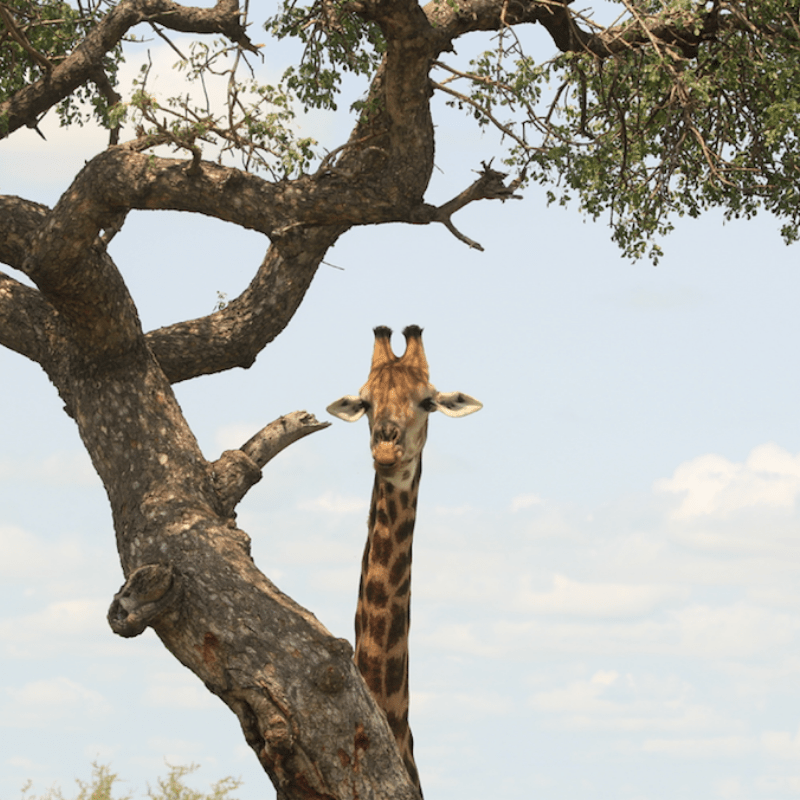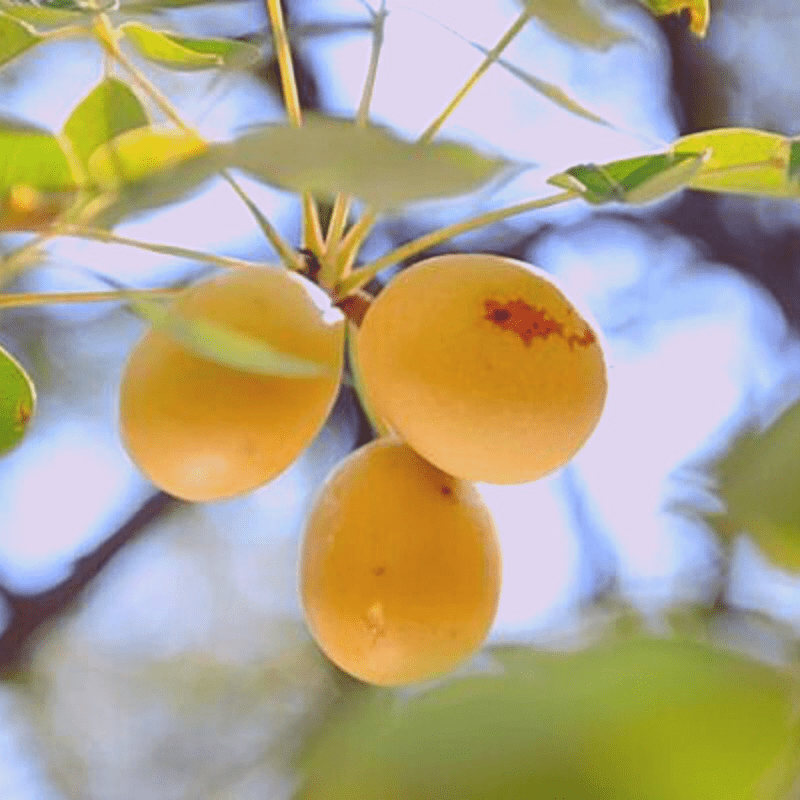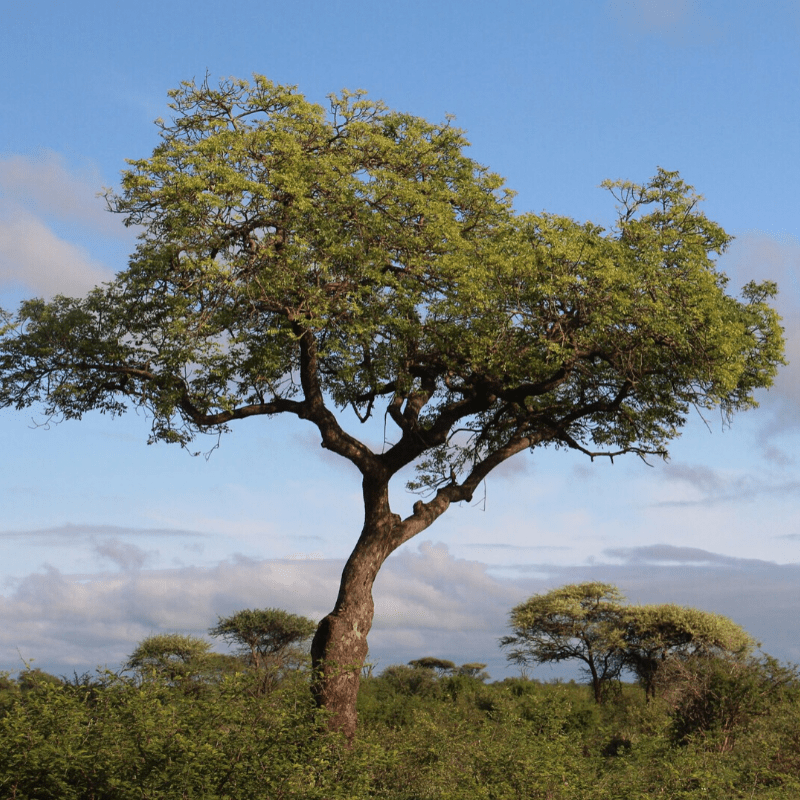Marula Tree
(Sclerocarya birrea)
Family: Anacardiaceae
Common names: marula (Eng.); morula (Northern Sotho); mufula (Tshivenda); ukanyi (Tsonga)
SA Tree No: 360
Description
The marula is a medium-sized to large deciduous tree with an erect trunk and rounded crown. It is one of the plants that played a role in feeding people in ancient times.
Male and female flowers are borne on separate trees, the flowers of male plants producing pollen and the female flowers producing the fruit for which the tree is so well known. These are green on the tree and turn yellow after falling (Feb-June).
Derivation of name and historical aspects
The genus name Sclerocarya means 'hard nut' and the species name birrea is derived from the word birr, the common name used in Senegal.
Ecology
Insects pollinate the flowers. Elephants, antelope, giraffe, zebra and many others browse the leaves. The tree bears a wealth of fruit for other living organisms, including humans. The larval stage of the beautiful green African moth Argema mimosae feeds on marula leaves.
Uses
The powdered bark is used to treat pregnant women to determine the gender of an unborn baby. If a pregnant woman wishes to have a girl, she will take a preparation from the female plant and for a boy she will use the male plant. Traditional healers use the hard nut in their divining dice.
A decoction of the bark treats dysentery, diarrhoea, rheumatism and has a prophylactic effect against malaria. The bark is an excellent remedy for haemorrhoids. Roots and bark are also used as laxatives. A drink made from marula leaves is used for the treatment of gonorrhoea. Sometimes one finds a tree with a wound, probably caused by a traditional healer or someone who collected material for medicinal use.
In the former homeland of Venda it was a criminal offence to cut down a living tree of this species. The wood is used for furniture, panelling, flooring, carvings and household utensils like spoons. The inner layer of bark makes a strong rope. Drums and yokes for certain animals are made from the wood of this tree. In Namibia some people use the wood for sledges. Boats are also made from the trunk. Red-brown dye can be produced from the fresh skin of the bark. The gum, which is rich in tannin, is mixed with soot and used as ink.
The fruit is edible, eaten either fresh or made into a delicious jelly. It also makes alcoholic beer known as Mukumbi by the Vhavenda people. A marula liqueur is available commercially. The white nut is highly nutritious and is eaten as it is or mixed with vegetables. Fruit-farming communities prefer planting a couple of these trees to attract pollinators to their farm in early spring.








